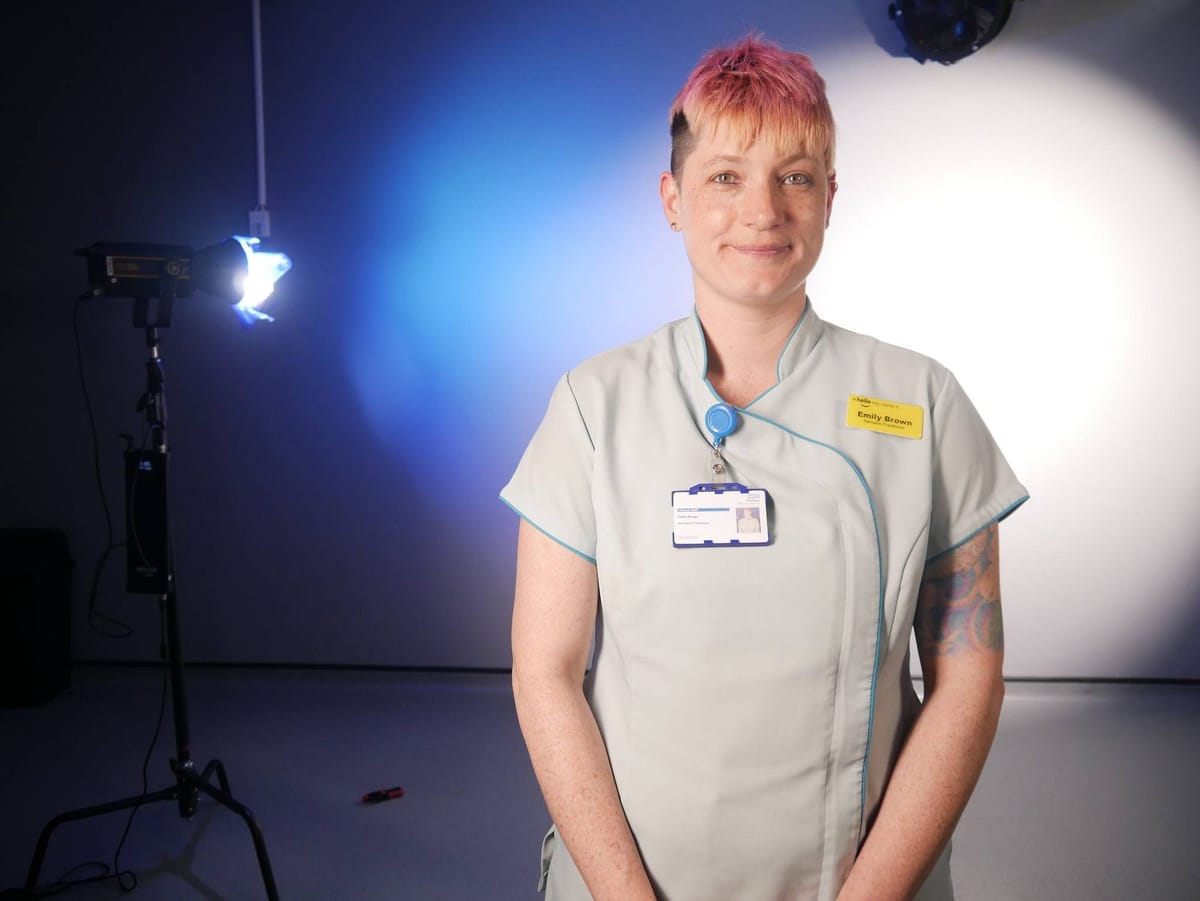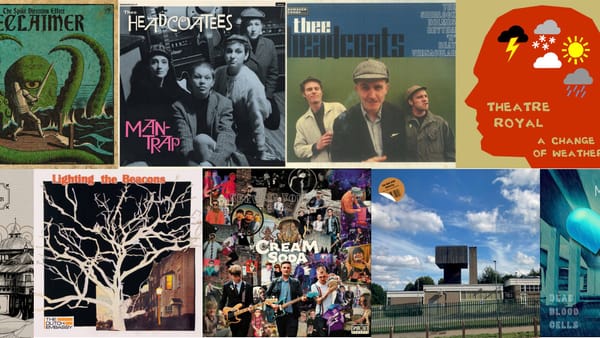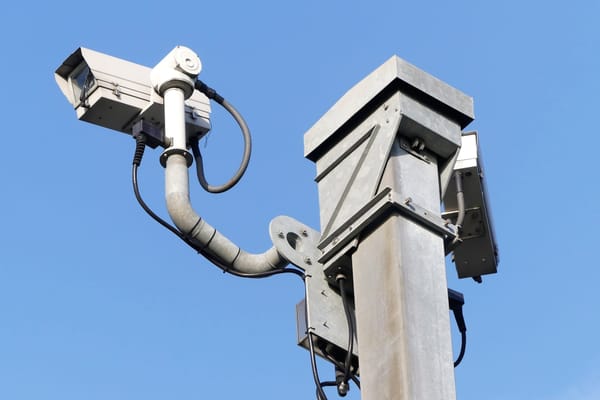"I tend to ignore negativity, it doesn't really bother me"
What Steven asked Emily Brown, Namaste practitioner and Hospital Hero at Medway Maritime Hospital

Emily Brown is the world’s first Namaste practitioner in a hospital environment and the recent winner of the Hospital Hero award for her work. Steven met Emily at Medway Maritime Hospital, accompanied by a member of the hospital’s comms team and a surprise guest. They discussed how practicing Namaste works, how Emily came to be doing it at the hospital, and what the future holds for Namaste care.

Where were you born?
Gillingham.
Were your parents from the area?
My mum is from Canterbury. My dad is Gillingham born and bred.
What jobs did your parents do growing up?
My dad was and still is a lagger, and my mum was a sister at Sunderland Daycare, Medway for 35 years until she retired.
What's a lagger?
It is a guy or a woman that puts special piping around pipes to protect them in big buildings.
How did you find school?
All my reports said, ‘Emily's a lovely student, but she talks too much.’ I liked certain subjects, but I didn't really find my passion until I was 18. School was just school.
Did you stay on for sixth form?
No. I went to… So ever since I was little, I wanted to be an elephant zookeeper.
Of course.
I went to Hadlow College in Tonbridge and got all my qualifications. Got a job as a vet nurse's assistant and hated it. Had a breakdown. I said, ‘Mum, what am I going to do with my life?’ And she said, ‘Why don't you become a carer?’ I was like, ‘Oh, I don't know if I could do that,’ but I gave it a go. My first customer was an elderly woman with dementia, and the rest was history. I fell in love with it. Then I've worked in care homes. I've been a live-in carer.
What was your first full time job?
My first full-time job was working in a bag shop down the Dockside.
What is your official occupation now?
I am a Namaste practitioner.
What is Namaste?
Namaste care is an alternative holistic treatment that was created for people living with dementia and those actively dying. But because of where I work, I've expanded it to palliative oncology, learning…
Before we bring it into the hospital, what is it?
It as a wider alternative holistic treatment. It's about treating the individual just as that. Just because they've got dementia doesn't mean they are dementia. Just because they're end-of-life doesn't mean they haven't had a life. It's about stimulating their senses. I don't know if you've ever eaten something and it triggers a memory. With Namaste care, we stimulate sound, taste, smell, and touch. I'll play them some of their favourite music, which can help them feel calm, spray some favourite perfume or aftershave, promote fluids using their favourite drink, and eating and things like that. But anything that that particular person enjoys. Namaste care is just personal pamper.
What does the word Namaste mean?
It's actually a greeting. Joyce Simard, who created it, chose the word Namaste because it means honouring the spirit within.
How did Joyce Simard come across this?
She was a social worker in America in the eighties and did a lot of care homes. She saw that the dementia patients were fed, bathed, and watered but were in a chair all in a circle. As the dementia progressed, she noticed that they couldn't participate in bingo or the standard things. So, she thought, what can I do for them? She started with hand massages, and they would respond really well. Gentle touch, combing of the hair, a hot towel shave. She saw how well it worked and ran with it and has been very successful at it. It's worldwide now.
And how did you come upon it?
I worked in a care home up the road called Parkview, and my manager paid to go on a training course at Priestfield Stadium. Unfortunately, she couldn't attend because she had to assess a new resident. But where she paid a lot of money, she went, ‘Emily, will you go for me?’ I was like, ‘No.’ She's like, ‘There's food’. I was like, ‘Okay’.
So, I went to Priestfield Stadium. I didn't know really what it was about. I get in, and there's all these women in suits and they're in their forties. And I'm 22 with bright hair and a funky dress. I felt very uncomfortable. Sat down at this table. I'm like, ‘Hi.’ They're like, ‘I'm the manager of this home.’ I was like, ‘I don't manage a home.’ Graham, our end-of-life nurse here (Medway Maritime Hospital), came out and was talking to her. Then Joyce Simard came out and spoke about Namaste care and it just blew my mind. We stayed in contact. She trained me. From there, I worked in various other homes and as a live-in carer and brought it here when I started as a CSW. (Clinical Support Worker).
When you say she trained you, what did that entail?
It was a day training course, and then we stayed in contact. She put me in contact with Namaste Care International just to keep me updated with how things were. If I had any questions, I could go to her.
When you started practicing, it was at the care home you were at?
As soon as the training ended, I ran back to the care home and said to the manager, ‘I need a Namaste room. This is amazing. Blah blah blah blah blah.’ She then made me an activities coordinator, so every day, I would take any patients that wanted it to the Namaste room. They would have a body massage, promote the fluids, do a hot towel shave, and it just it worked wonderfully.
Did you have any resistance?
Yes. But I tend to ignore negativity, it doesn't really bother me. As long as the big boss is saying yes, I don't really care what other people say.




